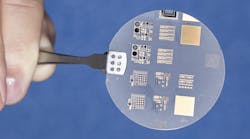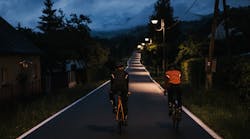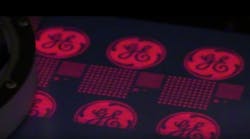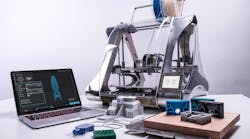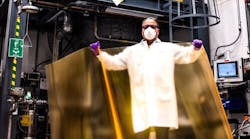Our polycarbonate light diffuser panels blend high light transmission and diffusion into one panel with state-of-art ultraviolet (UV) radiation blocking co-extrusion, which is well suited to use as the cover material for LED lighting designs. Since these products offer numerous light diffusing options, they simplify the solid-state lighting (SSL) design process. In the recent past, companies have been exploring for new technologies in this niche which increase light uniformity and eliminate the LED hot spots. The degree of light diffusion depends on the grade of the polycarbonate panels. Like other polycarbonate products, the polycarbonate light diffuser panels are tough, which makes them ideal from both security and safety expectation viewpoints; they have an exceptional temperature resistance which allows for a high level of design in that LEDs can be placed closer to these very thin polycarbonate sheets, etc.
There are some factors to consider while opting for polycarbonate light diffuser panels for LED lighting covers.
To begin with, the popularity of LED lighting systems has been due to their long lifespan, cost effectiveness, increased energy efficiency, design flexibility, absence of both mercury in the design and UV radiation, resistance to vibration, and the ability to operate even in low temperatures. Some of the factors to consider include:
1. Performance requirements: These may vary depending on the nature of the lighting application. For instance, light diffusion is an important performance requirement which can be manipulated to suit a given environment or lighting function. Other factors include light transmission, color control, and the application-driven functions such as surface finish.
2. Design: The polycarbonate light diffuser panels have unique designs which can be leveraged to meet certain light diffusion criteria. The quality of the light diffuser panel will depend on the manufacturer’s specifications and this is the reason why you should only purchase these products from reliable and reputable manufacturers and suppliers.
The polycarbonate light diffuser panels employ two main techniques.These include scattering, which is mostly referred to as the bulk diffusion, and the refraction, which is also considered to be an optically active surface type of light diffusion.
In the scattering technique, a scattering additive can be incorporated within the opal diffuser. There is an array of modern additives that are used to manufacture these types of light diffusion panels. Here clear particles that have different refractive indices can be obtained. This is also determined by the shape of the particle, size, and material. This makes it easier to achieve a better scattering effect.
On the other hand, the refraction technique is mainly used for frosted polycarbonate panels that have an irregular surface structure. Whenever light reaches a surface at an angle, it will be scattered (refraction occurs). Moreover, the boundary between air and polycarbonate sheet also causes a change in the reflective index.
To obtain a superior polycarbonate light diffuser panel for SSL, you have to consider vital performance trade-offs which exist between light transmission and diffusion. This analysis is important since manufacturers employ the analysis to achieve optimal performance. For instance, when a polycarbonate sheet has a higher percentage of additive, it will automatically lower the light transmission while increasing the light diffusion. Therefore, any adjustments should not sacrifice either of the two parameters.
To begin with, the popularity of LED lighting systems has been due to their long lifespan, cost effectiveness, increased energy efficiency, design flexibility, absence of both mercury in the design and UV radiation, resistance to vibration, and the ability to operate even in low temperatures. Some of the factors to consider include:
1. Performance requirements: These may vary depending on the nature of the lighting application. For instance, light diffusion is an important performance requirement which can be manipulated to suit a given environment or lighting function. Other factors include light transmission, color control, and the application-driven functions such as surface finish.
2. Design: The polycarbonate light diffuser panels have unique designs which can be leveraged to meet certain light diffusion criteria. The quality of the light diffuser panel will depend on the manufacturer’s specifications and this is the reason why you should only purchase these products from reliable and reputable manufacturers and suppliers.
The polycarbonate light diffuser panels employ two main techniques.These include scattering, which is mostly referred to as the bulk diffusion, and the refraction, which is also considered to be an optically active surface type of light diffusion.
In the scattering technique, a scattering additive can be incorporated within the opal diffuser. There is an array of modern additives that are used to manufacture these types of light diffusion panels. Here clear particles that have different refractive indices can be obtained. This is also determined by the shape of the particle, size, and material. This makes it easier to achieve a better scattering effect.
On the other hand, the refraction technique is mainly used for frosted polycarbonate panels that have an irregular surface structure. Whenever light reaches a surface at an angle, it will be scattered (refraction occurs). Moreover, the boundary between air and polycarbonate sheet also causes a change in the reflective index.
To obtain a superior polycarbonate light diffuser panel for SSL, you have to consider vital performance trade-offs which exist between light transmission and diffusion. This analysis is important since manufacturers employ the analysis to achieve optimal performance. For instance, when a polycarbonate sheet has a higher percentage of additive, it will automatically lower the light transmission while increasing the light diffusion. Therefore, any adjustments should not sacrifice either of the two parameters.
Contact:
Sunny Sun, Marketing director - Excelite Plastic LimitedE-mail:
[email protected]Web site:
www.exceliteplas.comSubmit new products, case studies/projects, and other press releases at http://www.ledsmagazine.com/content/leds/en/addcontent.html and http://www.ledsmagazine.com/content/leds/en/iif/add.html.


